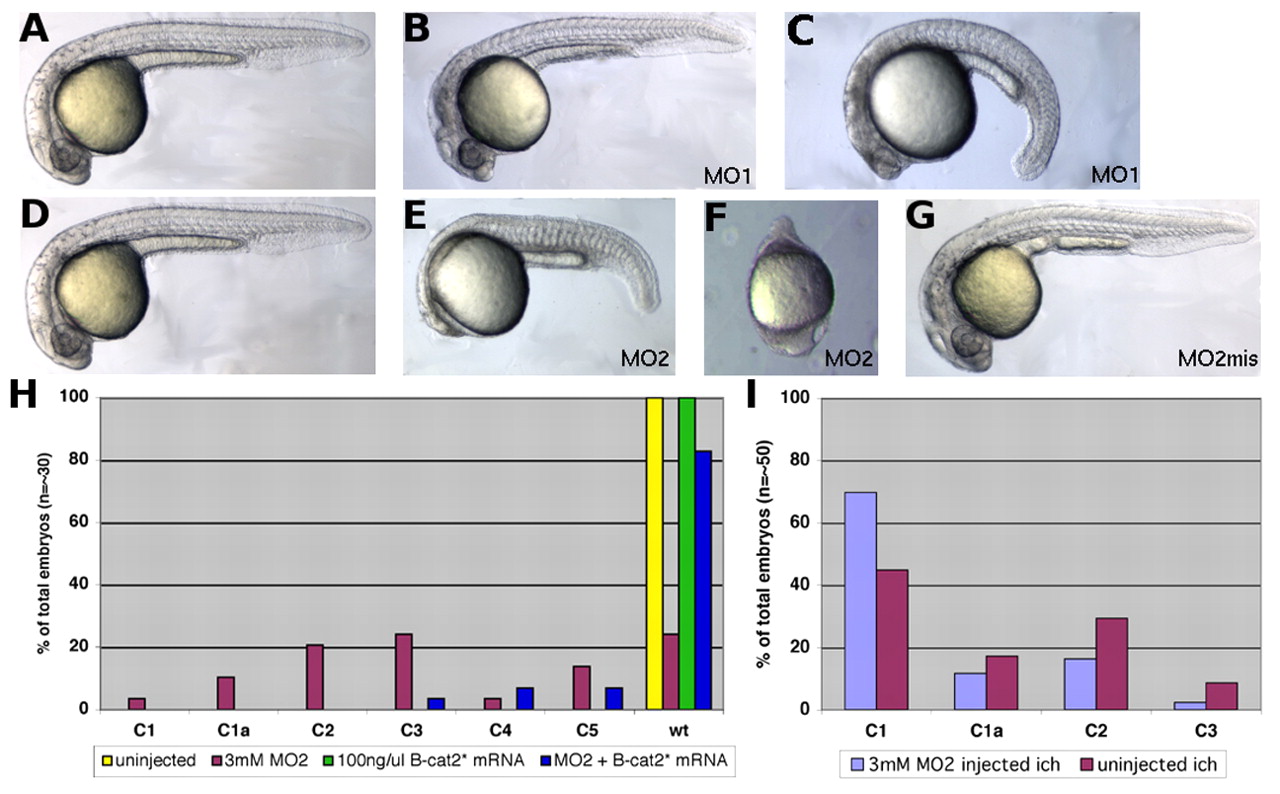Fig. 4 Injection of morpholino antisense oligonucleotides (MOs) directed against the translational initiation site of β-catenin-2 can phenocopy the ichabod mutation, whereas MOs against β-catenin-1 have no ventralizing effect. (A-C) Effect of injection of MO1 into wild-type embryos. Injection of 1 mM MO1 often results in a slight necrosis in the head (B) and 3 mM MO1 causes more severe necrosis and bent shortened tails (C), but in neither case were the embryos ventralized. A wild-type embryo at the same stage is shown for comparison (A). (D-G) Effect of injection of MO2 into wild-type embryos. Examples of Class 2 (E) and Class 1 (F) embryos obtained by injecting wild-type embryos with 3 mM MO2 are compared with a wild-type embryo (D) and an embryo injected with 3 mM MO2mis (G). (H) The effects of injection of 3 mM MO2 can be rescued by co-injection of β-catenin-2* RNA (β-catenin-2 RNA with an altered ribosome binding region that will not bind to MO2). Injection of 3 mM MO2 alone yielded a distribution of ventralized phenotypes (red bars). Injection of β-catenin-2* RNA alone had no ventralizing effect (compare green and yellow bars). Co-injection of MO2 and the RNA yielded mostly wild-type-appearing embryos, with only a few embryos exhibiting weak ventralization (blue bars). In this experiment, we classified non-ventralized embryos into two classes, wild-type and C5, with C5 embryos exhibiting kinky notochords. (I) Injection of MO2 into ichabod embryos shifted the phenotypic distribution to more-severe ventralized classes.
Image
Figure Caption
Figure Data
Acknowledgments
This image is the copyrighted work of the attributed author or publisher, and
ZFIN has permission only to display this image to its users.
Additional permissions should be obtained from the applicable author or publisher of the image.
Full text @ Development

